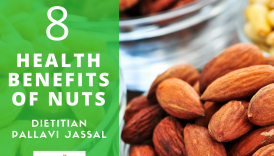Mindful Practices for a Happy and Healthy Lifestyle

Understanding Mindfulness
In today’s fast-paced world, finding moments of peace can seem nearly impossible. Mindfulness offers a way to slow down, grounding ourselves in the present. At its core, mindfulness is about paying full attention to the here and now, without judgment. Imagine sipping your morning coffee; mindfulness urges you to truly savor each sip, noticing the warmth of the mug, the aroma wafting up, and the flavors dancing on your palate. It transforms mundane routines into profound experiences. Mindfulness encourages individuals to become aware of their thoughts, emotions, and sensations. This holistic awareness allows us to understand our internal responses better, cultivating a deeper connection with ourselves and the environment we inhabit.
- Mindful Practices for a Happy and Healthy Lifestyle
- Understanding Mindfulness
- Benefits of Mindful Practices
- Mindful Eating Habits
- Importance of Mindful Eating
- Tips for Mindful Eating
- Mindful Meditation Techniques
- Types of Meditation
- Steps for Mindful Meditation
- Mindful Exercise Routines
- Incorporating Mindfulness into Workouts
- Mindful Movement Practices
- Mindful Stress Management Strategies
- Mindfulness for Stress Relief
- Mindful Breathing Techniques
- Mindful Sleep Practices
- Importance of Quality Sleep
- Mindful Bedtime Rituals
Benefits of Mindful Practices
The power of mindfulness extends beyond just awareness; it brings a myriad of benefits to our daily lives. Here are some significant advantages of incorporating mindful practices:
- Reduced Stress: by focusing on the moment, individuals can decrease anxiety and stress levels, feeling more grounded.
- Improved Focus: mindfulness enhances concentration, enabling better task execution—be it in the workplace or at home.
- Emotional Regulation: practicing mindfulness helps manage emotions, leading to healthier relationships and interactions.
- Enhanced Creativity: a mindful approach stimulates creativity, helping individuals think outside the box and embrace new ideas.
Consider incorporating mindfulness into your daily routine. Whether it’s through mindful breathing, meditation, or simply enjoying a meal without distractions, cultivating these practices can foster a richer, more fulfilling life experience.
Mindful Eating Habits
Importance of Mindful Eating
Transitioning from a general understanding of mindfulness, one specific practice that can greatly enhance well-being is mindful eating. In our busy lives, meals often become a mere distraction rather than an experience to enjoy. Mindful eating shifts the focus, emphasizing the significance of food beyond mere sustenance. It invites individuals to engage with their meals fully, leading to a more satisfying and healthier relationship with what we consume. When we practice mindful eating, we are more attuned to our body’s hunger and satiety cues. This awareness can combat overeating, help in weight management, and encourage healthier food choices. Imagine sitting down to a dinner of your favorite dish. By eating mindfully, you savor every bite, acknowledging the flavors and textures, which may inspire you to appreciate nutritious foods even more.
Tips for Mindful Eating
Implementing mindful eating practices can be simple yet transformative. Here are some tips to get started:
- Eliminate Distractions: Turn off your phone, television, and other electronic devices during meals. Focus on the food and the experience.
- Chew Slowly: Take the time to chew each bite thoroughly. This not only enhances flavor but also aids digestion.
- Engage Your Senses: Pay attention to the colors, aromas, and textures of your food. What do you see on your plate? What scents draw you in?
- Listen to Your Body: Before reaching for seconds, ask yourself if you’re actually hungry or just eating out of habit.
By incorporating these practices into meals, individuals can cultivate a more meaningful connection with food, leading to improved overall health and enjoyment. Over time, mindful eating can significantly enhance one’s life quality.
Mindful Meditation Techniques
Types of Meditation
Continuing the journey into mindfulness, meditation is a powerful tool that enhances the practices of awareness and presence we explored earlier. There are various types of meditation, each catering to different needs and levels of experience. Understanding what works best for an individual is key to making the practice enjoyable and effective. Some popular types of meditation include:
- Focused Attention Meditation: This involves concentrating on a single object, thought, or sensation (like your breath) to develop concentration and calm the mind.
- Body Scan Meditation: This technique focuses on different parts of the body, promoting relaxation and supporting body awareness.
- Loving-Kindness Meditation: Aimed at fostering compassion and love towards oneself and others, this involves silently repeating phrases of goodwill.
- Mindful Breathing: One of the simplest forms, it involves paying full attention to the breath as it flows in and out.
Each type offers unique benefits, helping individuals foster mindfulness in various aspects of their lives.
Steps for Mindful Meditation
Getting started with mindful meditation may seem daunting, but it’s quite accessible. Here’s a simple guide to help beginners ease into the practice:
- Find a Quiet Space: Choose a comfortable and quiet spot where you won’t be disturbed.
- Get Comfortable: Sit or lie down in a position that feels relaxed but alert. You can use a cushion or chair—whatever works best.
- Close Your Eyes: Gently close your eyes to minimize distractions.
- Focus on Your Breath: Begin to breathe deeply and notice the sensation of your breath as it moves in and out. If your mind wanders, gently bring your focus back to your breath without judgment.
- Observe Thoughts: As thoughts arise, acknowledge them without attachment and return to your breath. This practice fosters mindfulness and patience.
- Start Small: Aim for just a few minutes at first, gradually increasing the duration as you become more comfortable.
By integrating these steps into daily routines, individuals can cultivate a more profound sense of peace, clarity, and awareness, enriching their overall mindfulness journey.
Mindful Exercise Routines
Incorporating Mindfulness into Workouts
As we move forward in our exploration of mindfulness, it’s essential to recognize the role physical activity plays in this practice. Mindful exercise routines not only benefit the body but they also cultivate a deeper awareness of movement and breath. Imagine stepping onto the yoga mat for a session—mindful movement encourages you to tune into how your body feels during each pose, letting go of distractions and worries. Incorporating mindfulness into workouts can transform the experience. Here are some simple ways to do just that:
- Set Intentions: Before beginning any workout, take a moment to clarify your intentions. What do you aspire to gain from this session? It could be strength, relaxation, or simply enjoying the movement.
- Tune In: Focus on your body’s sensations throughout the exercise. Feel the ground beneath your feet or the stretch in your muscles. Acknowledge both comfort and discomfort without judgment.
- Breathe Deeply: Synchronize your breath with movement. Whether you’re lifting weights or practicing yoga, allow your breath to guide your pace.
Mindful Movement Practices
Mindfulness can manifest in various forms of physical activity beyond traditional workouts. Mindful movement practices allow individuals to engage in a holistic approach to fitness. Some popular options include:
- Yoga: Combining movement with breath, yoga promotes body awareness and relaxation.
- Tai Chi: This ancient martial art emphasizes slow, deliberate movements, fostering balance and mindfulness.
- Walking Meditation: A simple walk can become a mindful practice by focusing on the rhythm of your steps and the sensations in your body.
By integrating mindful practices into exercise routines, individuals can experience enhanced physical benefits and a deeper connection to their bodies, ultimately enriching their overall well-being. Embracing mindfulness in movement can lead to a more fulfilling and mindful life.
Mindful Stress Management Strategies
Mindfulness for Stress Relief
Transitioning into the realm of stress management, mindfulness emerges as a powerful ally in combating life’s pressures. In our fast-paced environments, stress can accumulate unnoticed, manifesting in both physical and emotional discomfort. By practicing mindfulness, individuals can cultivate a stronger sense of clarity amid chaos, allowing them to respond to stressors rather than react impulsively. Mindfulness for stress relief means tuning in to the present moment without judgment. This practice enables you to observe your thoughts and feelings rather than becoming overwhelmed by them. For example, during a particularly stressful day at work, taking five minutes to breathe and notice your surroundings can create a significant shift in perspective. Rather than allowing anxiety to spiral, you regain control over your response and foster a state of calm.
Mindful Breathing Techniques
Among the various strategies for mindful stress management, mindful breathing is one of the most effective. This technique is accessible and can be practiced anytime, anywhere. Here are some practical methods to incorporate mindful breathing into your routine:
- Diaphragmatic Breathing: Also known as belly breathing, place one hand on your chest and the other on your belly. Inhale deeply through your nose, allowing your belly to rise. Exhale through your mouth, noticing your abdomen fall.
- 4-7-8 Breathing: Inhale through your nose for a count of four. Hold your breath for seven counts, then exhale through your mouth for eight counts. This technique cultivates relaxation and lowers stress levels.
- Equal Breathing: Inhale through your nose for a count of four, then exhale from your mouth for a count of four. This method promotes balance and steadiness.
Integrating these simple breathing techniques into daily life can serve as a buffer against stress. Not only do they calm the mind, but they also return focus, providing clarity in challenging situations. With regular practice, mindfulness becomes a powerful tool for navigating life’s stresses with grace and resilience.
Mindful Sleep Practices
Importance of Quality Sleep
As we transition to the topic of sleep, it’s essential to recognize the profound impact that quality rest has on overall well-being. In today’s non-stop culture, sleep often takes a backseat, but it plays a crucial role in physical health, mental clarity, and emotional balance. Quality sleep allows the brain to recover and consolidate memories, while the body repairs itself and rejuvenates. On a personal note, many can relate to the foggy, irritable feeling after a restless night. When individuals prioritize sleep, they not only enhance their resilience to stress but also improve their mood and cognitive function. Research has shown that consistent, restorative sleep can lead to:
- Improved focus and productivity: A well-rested mind can concentrate better, leading to more effective performance.
- Enhanced emotional regulation: Good sleep supports a balanced mood, reducing anxiety and irritability.
- Stronger immune function: Quality rest helps the body fend off illnesses and recover more efficiently.
Mindful Bedtime Rituals
To promote quality sleep, establishing mindful bedtime rituals can make all the difference. These practices signal to the body that it’s time to wind down and prepare for rest. Here are some effective strategies to integrate:
- Create a Relaxing Environment: Dim the lights in your bedroom, and consider using calming scents like lavender to create an inviting atmosphere.
- Screen-Free Time: Aim to disconnect from electronics at least an hour before bed. Instead, opt for reading a book or practicing gentle stretches.
- Gratitude Journaling: Spend a few minutes reflecting on your day, jotting down three things you are grateful for. This can shift your mind away from daily stresses and cultivate a sense of calm.
- Gentle Stretching or Yoga: Engaging in simple stretches or a short yoga routine can release tension in the body and prepare muscles for restful sleep.
By incorporating mindful bedtime rituals, individuals can create a nurturing routine that fosters better sleep quality. Embracing these practices ensures a restorative night’s sleep, ultimately enriching physical and mental health and enhancing the benefits of a mindful lifestyle.





